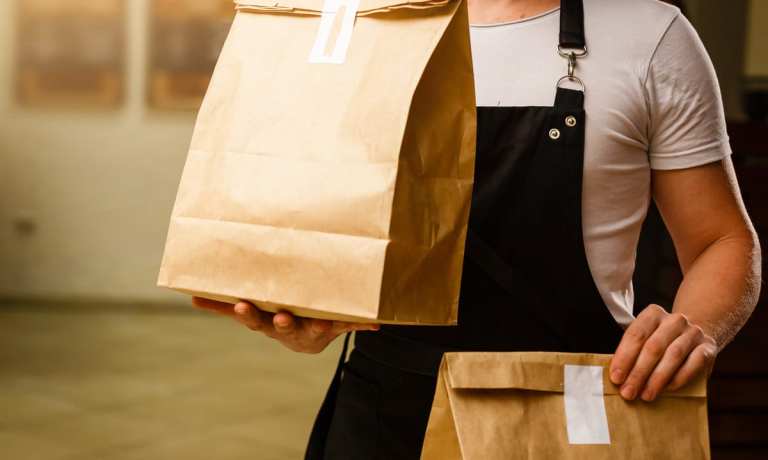
Turns out, when consumers get used to ordering restaurant meals to be delivered straight to their door without ever having to put on their outdoor pants, they are not so quick to give up that on-demand convenience. The majority of United States adults are now fully vaccinated, and many of those who are not were never terribly concerned about coronavirus contagion in the first place. Yet, even as consumers grow comfortable returning to restaurants and as lifting local regulations allow dining rooms to reopen at full capacity, digital sales are remaining strong for most restaurants.
PYMNTS’ study, The Bring-It-To-Me Economy: How Online Marketplaces And Aggregators Drive Omnichannel Commerce, created in collaboration with Carat by Fiserv, finds that many of the on-demand ordering behaviors consumers developed in lockdown are here to stay. The study notes that two-thirds of consumers are now ordering restaurant meals to be eaten at home, and that they are 31 percent more likely to order from restaurants for off-premises consumption than on-premises. These food-on-demand behaviors are not limited to restaurant ordering — the study found that 72 percent of grocery shoppers now order their groceries online for delivery, with 28 percent more ordering for curbside pickup. Additionally, the lines between the businesses that deliver restaurant meals and those that deliver groceries are also blurring, with some eGrocery stores delivering meals cooked in-house and with supermarket chain Albertsons Companies now partnering with DoorDash.
“Consumers’ desire to get everything in their neighborhood on-demand has increased dramatically,” Fuad Hannon, head of new verticals at DoorDash, said in a statement. “Leveraging our extensive logistics network and Albertsons’ wide selection of fresh groceries, we are creating a one-stop-shop for customers to access any of the essentials they need, delivered to their doorstep within an hour.”
While consumers’ expectation for immediacy and convenience is growing across commerce categories, food sellers are in the uniquely challenging position of being expected to fulfill orders not in days, but in hours (for grocers) or minutes (for restaurants). As Ken Chong, CEO of All Day Kitchens (formerly known as Virtual Kitchen Co.) predicted to PYMNTS in a recent interview, “I think we’re going to see the same transition in food, convenience, and grocery that brick-and-mortar retail saw in the last 20 years, but it’s going to require very different set of platform and infrastructures.”
However, in today’s connected economy, these categories are not as distinct as they once were. As consumers grow used to getting their groceries delivered to their doorstep, sometimes within the half hour or even within 10 minutes, and to getting their meals within the hour, it begs the question — why just food?
Many of the major food delivery services are answering that question by branching out beyond food delivery. DoorDash’s latest partnership, creating Beyond Meat grilling kits for the Fourth of July, brings grilling tools, an apron and a bottle opener, among other items, to consumers’ doors. Major food delivery services have also been partnering with a range of different non-food retailers to offer ultra-fast delivery — take Instacart’s partnership with craft store Michaels and with organization retailer The Container Store, Uber Eats’ partnership with prescription delivery firm Nimble, or almost everyone’s partnerships with Walgreens. Plus, DoorDash has its direct-to-consumer (D2C) convenience store DashMart, Uber Eats has convenience store delivery through its partnership with Gopuff, and Instacart collaborates with with 7-Eleven.